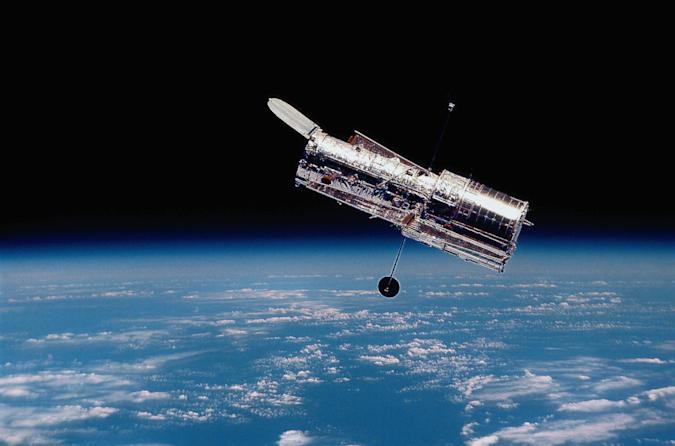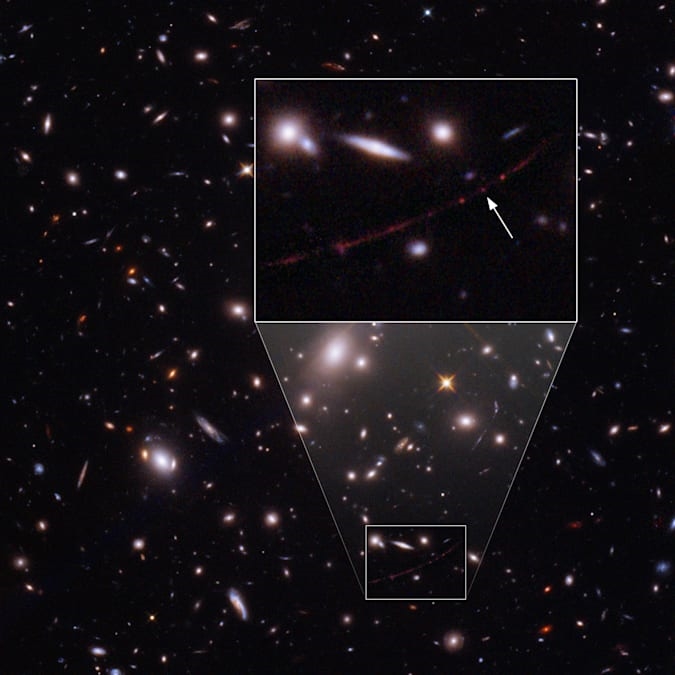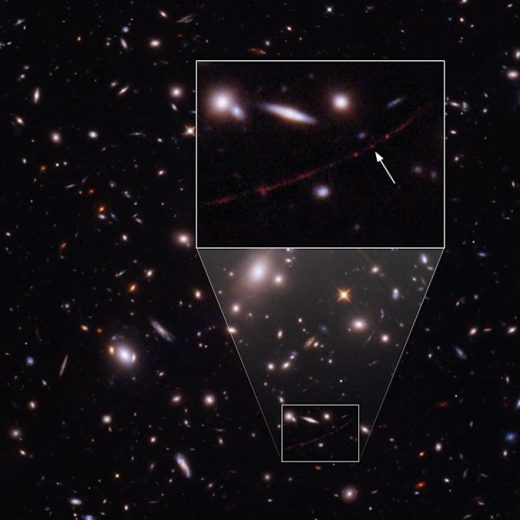Researchers may have discovered a galaxy barely younger than the Big Bang
Hubble may have spotted the most distant star to date
Earendel may have formed relatively soon after the universe itself.


Astronomers have had success finding some of the most distant galaxies in the universe, but now they might have pinpointed the most distant star to date. As SyFy Wire notes, researchers using the Hubble Space Telescope have spotted Earendel (“morning star” in Old English), a star currently reckoned to be 12.9 billion light-years away — the light we see from it comes from when the universe was roughly 900 million years old. Until now, the smallest objects seen at that distance were star clusters.
If confirmed, the star will easily smash the previous record. The most distant star before now was MACS J1149+2223 Lensed Star 1, which shone when the universe was about 4 billion years old. Scientists found that star using Hubble in 2018.

The feat was accomplished using gravitational lensing, or relying on the gravity of galaxy clusters to distort light and magnify objects that would otherwise remain difficult or impossible to detect. The star’s host galaxy had its light warped into a long arc thanks to the massive WHL0137-08 galaxy cluster. As Earendel sits on the edge of a space “caustic,” or a ripple in the fabric of space, its brightness was magnified a thousand times and helped it stand out.
Earendel is a large beast, too. The scientists estimate it’s “at least” 50 times the mass of the Sun, and millions of times brighter. It’s also expected to have relatively little metal, as it would have formed when it didn’t have access to heavier elements that came with successive star generations. If it’s made of only hydrogen and helium, it would be the first evidence of very early “Population III” stars.
The object hasn’t been confirmed as a star yet, but that might come relatively soon. Observers plan to use the James Webb Space Telescope’s high infrared sensitivity to both verify Earendel’s star status and study it in more detail. With that said, Webb might also help pinpoint stars that are even more distant. To put it another way, he technology needed to acknowledge the star’s existence might relegate it to a footnote.
(15)


